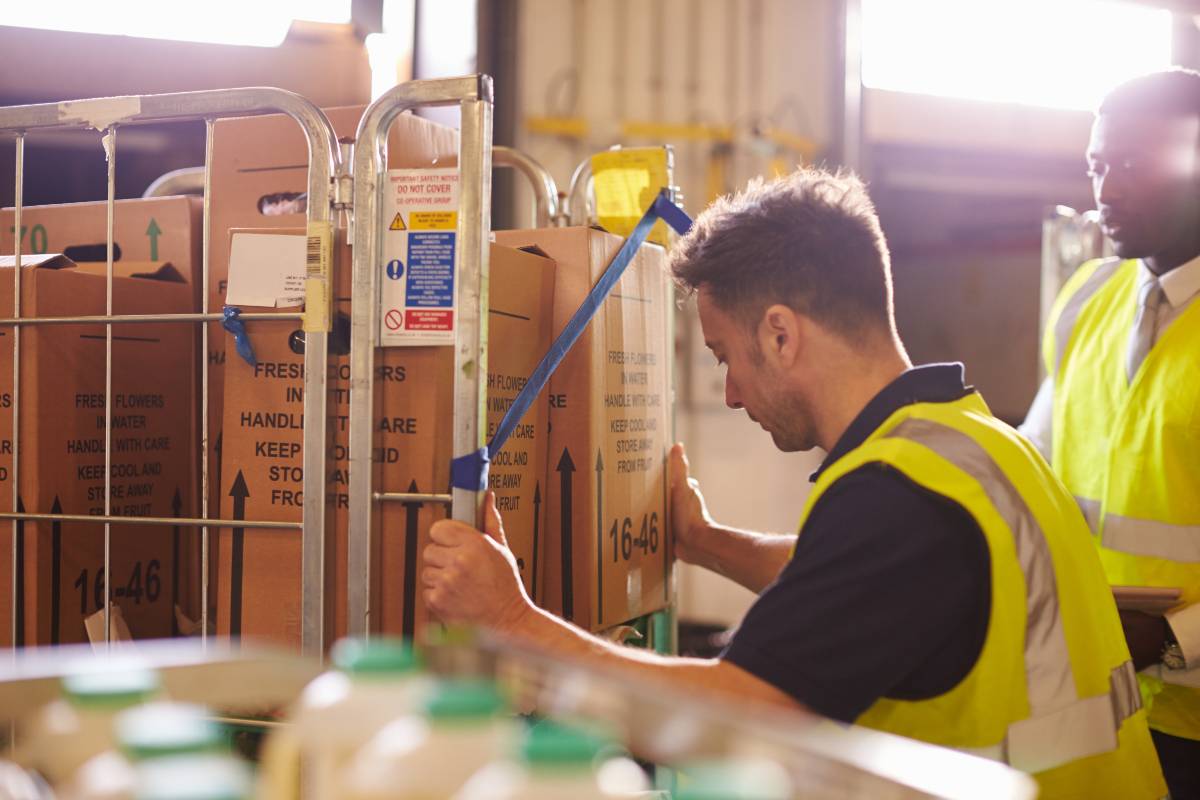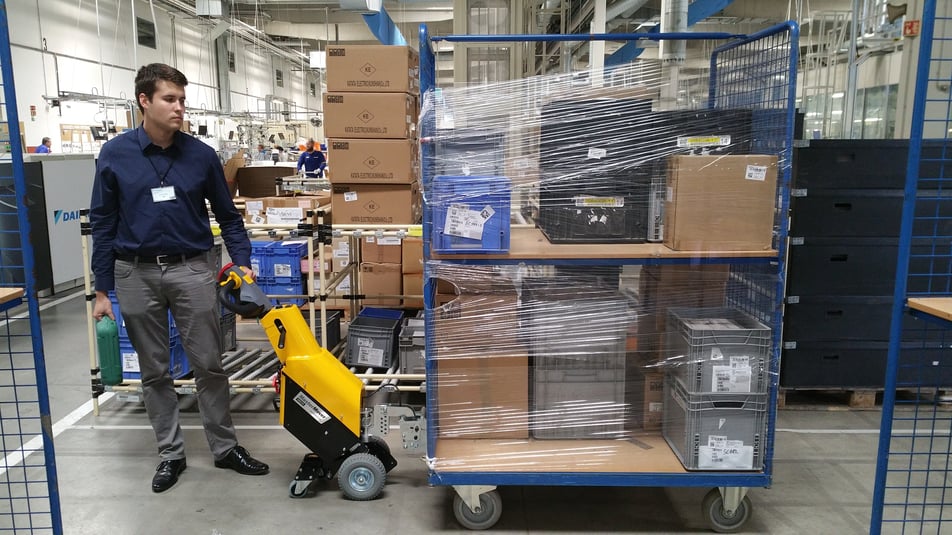Understanding Manual Handling Weight Limits
Manual Handling
In this blog, we'll talk about the importance of safe weight limits for moving loads by hand, how these limits vary for men and women and why it's important to use guidelines on weight limits to reduce the risk of manual handling accidents and workplace injury.

A Guide to Manual Handling Weight Limits
Manual handling tasks are a part of most industries, from manufacturing and logistics to healthcare and retail. However, the physical demands of lifting, carrying, and moving a heavy load can put workers at risk of injury. Understanding and adhering to manual handling weight limits is crucial to maintaining a safe working environment and preventing injuries such as musculoskeletal disorders, strains and other injuries.
The Significance of Manual Handling Weight Limits
Manual handling weight limits refer to the maximum amount of weight that a person can safely move. These limits aim to protect workers from overexertion, strains, sprains, and other musculoskeletal injuries.
Manual handling statistics show that injuries resulting from manual handling account for over 1/3 of all workplace injuries in the UK. It's estimated that around 7.3 million working days are lost each year as a result of injuries such as musculoskeletal disorders. It's clear that manual handling tasks present the risk of injury and directly impact productivity and efficiency. With this in mind, it's crucial you understand the weight limit advised for different handling tasks, how to move loads by hand safely and what supporting aids are available.
5 Factors Impacting Manual Handling Weight Limits
Weight limits for manual handling can change based on factors like an individual’s ability, the task, and the available equipment. The weight limit can be influenced by a range of factors, including:
- Movement Requirements
Manual handling includes more than just lifting. Pushing, pulling, and stopping wheeled loads by hand also needs to be considered. Certain aspects of a movement such as positioning, pushing, stopping, pulling, lifting, placing, and lowering a heavy object, can all affect how much weight a person can safely move. Repetitive or awkward movements also reduce the weight an individual can move and are a significant risk factor that should be considered. - Individual Capacity
Every individual has different physical abilities and limitations. Age, fitness level, medical history, and existing conditions determine the amount of weight someone can safely move. It's important to consider individual and take necessary precautions to minimise the risk of injury at work by assessing the task and utilising handling aids and material handling equipment where possible. - Load Characteristics
The shape, size, and weight distribution of the object or load being moved affect how easily it can be handled. Awkwardly shaped or unbalanced loads can increase the risk of injury. - Lifting Techniques & Posture
Where a load needs to be lifted, poor lifting techniques and posture can impact the weight an individual can lift or move. The HSE ‘Good Handling Techniques’ advises that to lift a load safely, you should use both hands, position the load in front of your body and avoid twisting. - Environmental Factors
Factors such as space constraints, floor conditions, and obstacles can all impact a worker's ability to move loads safely. The movement of loads up and down slopes requires significantly more effort and, in turn, reduces the maximum weight an individual can move.


What are the Manual Handling Weight Limits?
Lifting Limits & Recommended Pushing and Pulling Weight Limits
HSE guidelines suggest that the maximum safe lifting weight an individual should lift or carry without assistance is 25kg (55lbs) for men and 16kg (35lbs) for women. The maximum weight limit assumes that the task is performed under ideal conditions, with correct training and using appropriate lifting techniques. The manual lifting of loads and the level of risk associated with heavy lifting can also be influenced by posture, height, and positioning.
According to the HSE, the guidance for the maximum weight figures for stopping and starting a wheeled load are around 20kg for men and 15kg for women. To keep a load in motion, this is around 10kg for men and 7kg for women.
Safe Manual Handling Guidelines & Tips
It is crucial to consider that weight limits are not the only factors determining safe manual handling. Pushing and pulling forces can also impact the weight an individual can safely handle. While there is no specific limit to the distance a load can be pushed or pulled over, it’s important to note that repetitive movements or movements over longer distances increase the likelihood of musculoskeletal disorders.
Here are 4 tips to help you ensure safe handling operations...
-
Manual Handling Training and Education
Employers should provide manual handling training on safe lifting and handling techniques. -
Risk Assessment
Regularly assess the workplace for potential manual handling risks. Implement measures to eliminate or minimise these risks whenever possible by assessing handling and lifting tasks and utilising supporting material handling equipment.
-
Material Handling Equipment
Whenever feasible, use mechanical aids like trolleys, electric tugs, and other material handling equipment to reduce the physical strain on workers and eliminate the need for manual handling.
-
Rotating Jobs
Implement policies that rotate workers' tasks to avoid prolonged exposure to repetitive or strenuous manual handling activity.
Why Manual Handling Weight Limits Are Important
Whether it's a lifting task or pushing and pulling heavy trolleys, understanding the recommended manual handling weight limit is crucial to ensure safety and reduce the risk of workplace injury.
Manual Handling Injury Prevention
Following and setting recommended maximum weight limits in your operations helps to reduce hazardous manual handling tasks, reducing the risk of injuries, and ensuring the well-being of employees.
Increased Efficiency
By adhering to safe practices and clear guidelines, employees can work more efficiently, as they are less likely to experience injuries when carrying out a manual handling task.
Employee Morale
A focus on safety shows employees that their well-being is a priority, boosting morale and job satisfaction. In setting manual handling weight limits, you should also use employee feedback to ensure weight limits are based on real-world feedback and experiences.
Compliance with Manual Handling Regulations
The Manual Handling Operations Regulations 1992 states that employers have legal obligations to make a ‘sufficient and suitable’ review of any handling tasks to understand the level of risk. Failure to comply with manual handling regulations and provide sufficient support to employees in reducing hazardous manual handling or workplace injuries can lead to an injury claim and subsequent injury compensation.
Your Guide to Manual Handling
Manual Handling
Explore our comprehensive manual handling resource hub — expertly curated materials designed to enhance workplace safety. Elevate your knowledge and empower your team to prevent injuries, making your workplace safer and more efficient.

Manual Handling Aids & Material Handling Equipment
As we’ve covered in this blog, setting and adhering to maximum weight limit guidelines can help keep staff safe and reduce the risk of injury. However, weight limits alone aren’t enough. How and when should you use handling aids to support load movement and eliminate manual handling?
Manual handling aids play a crucial role in ensuring the safety and well-being of individuals involved in tasks that require lifting, carrying, or moving heavy objects. Manual handling aids should be used when tasks exceed an employee’s abilities, are repetitive or involve moving over rough terrain or slopes.
Manual handling aids, which can include items such as electric tugs, trolleys, lifting belts, dollies, and hoists, not only reduce the risk of immediate injuries like strains and sprains but also contribute to long-term health by preventing chronic musculoskeletal issues. By promoting proper body mechanics and reducing the physical strain on workers, manual handling aids enhance productivity, decrease workplace accidents, and contribute to a more efficient and safe working environment, benefiting both staff and employers alike.
Simple & Safe Manual Handling Solutions
Our battery-powered electric tugs and tows are designed using the same guiding principles – dependable performance and safety. Let our tugs do the work...
SmartMover

Compact but powerful, the SmartMover is the ideal manual handling solution – trusted to improve safety across industries.
MasterTow

Drive safety and efficiency with our powerful electric tow tugs, designed to safely move loads of up to 20,000kg.
MasterTug

The MasterTug range allows a single pedestrian operator to easily push, pull and steer wheeled loads weighing up to 20,000kg.
Having a solid understanding of manual handling weight limits is essential for creating a safe and productive work environment. To ensure safe handling, you should use the recommended weight limits to inform your own processes whilst considering factors such as the task, frequency and individual capabilities.
Delve into our Manual Handling Guide
We made a simple checklist to help you assess handling processes and reduce the risk of manual handling injuries.
What’s inside…
- Everything you need to know about manual handling risks
- Manual handling risk assessment checklist for your operations
- How to reduce the risk of a manual handling accident
- Common questions to ask when sourcing material handling equipment